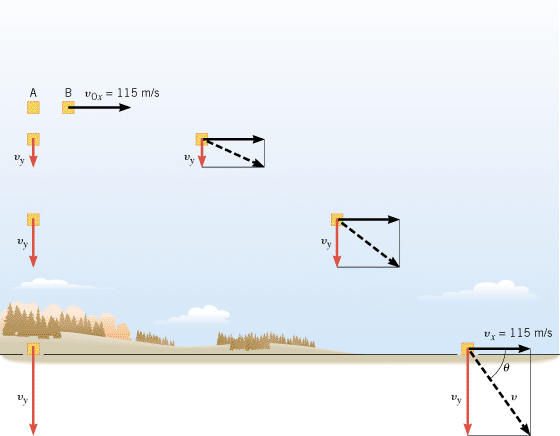

To find the maximum height substitute V y = 0 at any other point use t to find the height of the projectile. The Range (R) is the maximum horizontal distance: The horizontal distance is calculated by: (use in non-accelerated motion conditions only) The horizontal velocity of a projectile is always constant Projectile Motion equations and Linear Motion Equations These are given so that you can identify the correct conditions to use each equation in solving problems. See illustration below.Įquations of motion relating to projectiles a y = -9.8 m/s 2).Īt the top of its flight (at t 1/2), the slope of the tangent to this parabola is zero, therefore the vertical velocity V y at that point is zero.Ī projectile launched at angle and an object dropped at the same time from the same height, will reach the ground at the same time. The vertical velocity V y, is affected by gravity - it is positive but decreasing for the first part of the trajectory and negative but increasing for the second part of the trajectory.

The horizontal velocity V x, is always constant - not affected by gravity (i.e. Important Physics principles of projectiles: Projectiles can be analyzed as a function of time t, and as a function of horizontal distance x.A projectile path (because it is a parabolic trajectory) will have two roots.When the projectile lands at time t (the total flight time), its vertical distance is zero (ground level).This is the total distance traveled by the projectile (horizontally ) in the x-direction The total horizontal distance (from the origin to where the projectile lands) is called the range (R).At the half time point (t 1/2 ), the projectile reaches its maximum height.The parabola is symmetrical about a point half way between the origin and the total horizontal distance traveled by the projectile. The trajectory (the path of the projectile) is a parabola.The vertical component of the initial velocity is called V 1y where V 1y = V 1 (sin ) Review vector addition using components for a better understanding of this topic The horizontal component of the initial velocity is called V 1 x where V 1 x = V 1 (cos ).The initial velocity V 1 is tangent to the path of motion at an angle with respect to the horizontal therefore, it has horizontal and vertical components.Important points to realize when analyzing projectile motion:


 0 kommentar(er)
0 kommentar(er)
